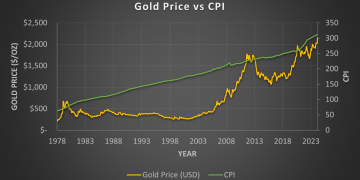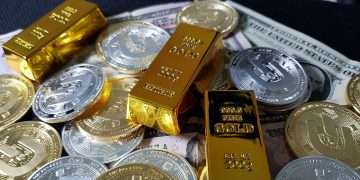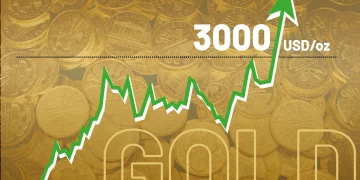Introduction: The Significance of the $2500 Milestone
Gold has long captivated investors with its reputation as a reliable store of value during times of uncertainty and economic volatility. The idea of gold breaching the $2500 per ounce barrier is not just a psychological milestone but a potential inflection point in global markets. Achieving such a price level could signal profound shifts in investor sentiment, monetary policy expectations, and macroeconomic stability. As gold edges closer to this historic benchmark, understanding the technical, fundamental, and psychological forces at play becomes crucial for investors seeking to navigate the next phase of the precious metals market.
Analyzing Resistance Levels and Technical Outlook
Technical analysis offers valuable insights into the likelihood of gold surpassing $2500. Over the past few years, gold has demonstrated a consistent pattern of building higher support levels while encountering resistance near previous peaks, most notably around the $2070-$2100 range. Each test of resistance has been met with profit-taking and temporary pullbacks, but the structure of higher lows suggests that bullish momentum is steadily building.
The current technical landscape features several bullish signals. The 50-day and 200-day moving averages have formed a “golden cross,” historically a precursor to major upward moves. Fibonacci retracement levels drawn from recent corrections indicate that a breakout above $2100 would likely open the path toward $2300, with $2500 emerging as the next major psychological and technical target.
Volume patterns further strengthen the bullish case. Rising volumes on days when gold advances, combined with muted selling pressure during corrections, point to strong underlying demand. Meanwhile, momentum indicators such as the Relative Strength Index (RSI) and the Moving Average Convergence Divergence (MACD) remain supportive, although investors should monitor these closely for signs of potential exhaustion as prices climb higher.
Fundamental Drivers Supporting Higher Gold Prices
Fundamentals align closely with the bullish technical picture. Persistent inflationary pressures, despite central bank tightening, continue to erode the real returns on bonds and savings, making gold an attractive hedge. Even as nominal interest rates rise, real interest rates remain historically low or negative, a condition that has traditionally been supportive of rising gold prices.
Central bank buying has also intensified. Countries like China, India, and Russia have aggressively added to their gold reserves, seeking to diversify away from the US dollar and shield themselves from geopolitical risks. This steady institutional demand forms a strong base of support for gold, independent of retail investor behavior.
Furthermore, geopolitical tensions remain elevated, with concerns over conflicts, trade wars, and political instability acting as catalysts for safe-haven flows into gold. At the same time, skepticism about the sustainability of stock market rallies and the growing risks of a global economic slowdown add urgency to the search for portfolio insurance, where gold naturally fits.
Psychological Barriers and Market Sentiment
Breaking through significant round-number milestones like $2500 often carries more weight than pure technical or fundamental analysis would suggest. Psychological resistance levels can lead to hesitation among buyers and encourage sellers to take profits. However, once breached, these levels can trigger a flood of new buying, as traders and investors view the breakout as confirmation of a new, higher trading range.
Market sentiment indicators currently suggest that while optimism is building around gold, we are not yet at the euphoric stages often associated with market tops. Commitment of Traders (COT) reports show a steady but measured increase in long positions, while gold ETF flows are positive but not excessively speculative. This restrained enthusiasm suggests that the rally still has room to run and that a breakout above $2500 could unleash a fresh wave of momentum buying.
Potential Price Targets After $2500
If gold decisively breaks above $2500, several potential price targets come into view. Technical projections based on previous breakout patterns suggest that $2600 to $2700 could be achievable in the near term. Fibonacci extension levels derived from the last major rally support these estimates, with the 1.618 extension lining up closely with the $2700 mark.
Longer-term projections, particularly if macroeconomic conditions remain supportive, could see gold aiming for $3000 per ounce within the next few years. Such a move would likely be driven not just by technical momentum but by continued erosion of fiat currency confidence, rising central bank demand, and structural changes in global financial systems.
Investors should be aware, however, that rapid moves toward these targets could invite increased volatility. Profit-taking, margin calls in other asset classes, and sudden shifts in monetary policy could all trigger sharp corrections along the way, even within a broader uptrend.
What a Breakout Could Mean for Investors
A confirmed breakout above $2500 would have profound implications for different classes of investors. For long-term holders, it would validate gold’s role as a core strategic asset and may encourage further allocations by institutions, pension funds, and sovereign wealth funds seeking inflation protection and diversification.
For traders, a $2500 breakout would present numerous tactical opportunities, including momentum trades, options strategies betting on continued upside, or leveraged plays via gold mining stocks, which typically outperform physical gold during strong bull markets.
Importantly, a breakout could also shift the broader narrative around asset allocation. Gold has often been treated as an insurance policy, a small allocation in a diversified portfolio. If it begins to deliver outsized returns, investors could re-evaluate its weighting, potentially increasing gold’s share of global investment portfolios—a trend that would itself reinforce upward price pressure.
Moreover, the mining sector would likely experience a renaissance. Higher gold prices improve profit margins for miners, stimulate new exploration projects, and encourage mergers and acquisitions. Investors willing to take on additional risk could benefit substantially by carefully selecting mining equities and related assets.

Risks and Challenges Ahead
Despite the bullish setup, investors must remain aware of potential risks. A major reversal in Federal Reserve policy, leading to sharply higher real interest rates, could sap gold’s momentum. Similarly, a sustained recovery in the US dollar or an unexpected economic boom could shift capital back toward riskier assets like equities and away from safe havens.
Technical “fakeouts” are another danger. Gold could briefly spike above $2500 only to fall back below the level, trapping momentum traders and triggering a wave of selling. Volume and confirmation indicators will be critical in distinguishing a true breakout from a head fake.
Additionally, regulatory changes affecting gold ETFs, changes in taxation of gold investments, or innovations in competing asset classes (such as cryptocurrencies) could alter demand dynamics in unpredictable ways.
Strategic Recommendations for Investors
Given the current landscape, a flexible and informed approach to gold investment is essential. For those already holding gold, maintaining positions with trailing stop-losses can protect gains while allowing participation in further upside. New investors might consider initiating positions incrementally, rather than all at once, to average into the market.
Diversification within the gold sector itself can also be valuable. Physical gold provides security and direct ownership, while gold ETFs offer liquidity and ease of trading. Gold mining stocks offer leverage to gold prices but come with company-specific risks that require careful research.
Options strategies, such as buying long-dated call options on gold ETFs, could provide a way to gain exposure to potential upside while limiting downside risk. Meanwhile, sophisticated investors might look into gold royalty and streaming companies, which provide exposure to gold production without the operational risks associated with mining.
Finally, maintaining a keen eye on macroeconomic indicators—including inflation data, real interest rates, central bank policies, and geopolitical developments—will be crucial in adjusting strategies as market conditions evolve.
Conclusion: Standing at the Threshold
Gold’s approach to the $2500 barrier represents more than just a price milestone; it signals the potential emergence of a new chapter in global financial markets. Whether driven by inflation fears, currency debasement, geopolitical uncertainty, or shifting investment paradigms, the forces behind gold’s ascent appear robust and enduring.
For investors, the key will be to remain vigilant, flexible, and informed. A breakout could offer tremendous opportunities, but it will also demand discipline and strategic agility to navigate inevitable volatility. By understanding the technical landscape, the fundamental drivers, and the psychological dynamics of the market, investors can position themselves not only to survive but to thrive as gold enters what could be one of the most exciting phases in its storied history.





































